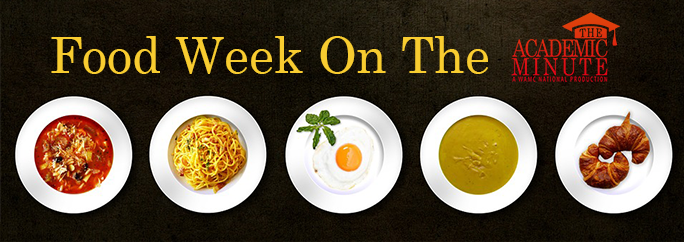Gina Mohr, Colorado State University – The Crunch Effect


Gina Mohr, Instructor, Marketing, College of Business, Colorado State University, October 4, 2011
Next time you open a bag of chips, concentrate on the crunch.
Gina Mohr, assistant professor of marketing at Colorado State University, examines how being mindful of the sound your food makes when consuming it may lead to eating less of it.
Dr. Gina S. Mohr is assistant professor of marketing at Colorado State University, College of Business. Gina holds a bachelor of arts in economics from the University of Colorado at Boulder (2002) and a PhD in marketing from the Leeds School of Business at the University of Colorado at Boulder (2009). Gina’s expertise is in consumer behavior and her research efforts focus on topics of consumer wellness.
Gina’s personal interest in health and nutrition directed her stream of research to examine how consumer health is influenced by various spheres of influence: political, motivational, and sensory. Her research in the political sphere examines how policies aimed at improving consumer health can lead to unintended, and potentially undesirable, consequences on food choice and evaluation. Research on motivational factors focuses on the product and social factors that influence a consumer’s health goals and, subsequently, food consumption behavior. Most recently, Gina’s research explores the sensory factors that affect consumer wellbeing while engaging in the food consumption experience- in terms of the choices made, quantities consumed, and emotions experienced while eating. Gina’s research appears in the Journal of Consumer Research, the Journal of Marketing, the Journal of Consumer Psychology, Health Psychology, and Food Quality and Preference.
The Crunch Effect

Researchers are eager to understand the factors that affect food consumption. Existing research has emphasized external sensory cues but in our current investigation we bring intrinsic sensory cues, or sensory properties of the food itself, to the forefront by examining how manipulating the salience of a food’s sound can affect consumption quantity.
Existing research provides support for the notion that being aware of the eating experience can help reduce consumption. We predict that the sound that a food makes may offer consumers a cue for monitoring their consumption by providing a greater awareness for the eating experience. In three studies we tested the prediction that making a food’s sound more salient would lead to less food consumption compared to when the food’s sound was not made salient.
In study one, participants were presented with a bowl of small cookies and instructed to eat either as loudly, or as quietly, as they could. In the control condition, participants were instructed to eat as they ordinarily would. We found when participants were instructed to focus on the sound they consumed fewer cookies than participants in the control.
In study two we manipulated the salience of the food’s sound by using a masking protocol in which white noise was delivered through headphones while participants ate from a bowl of pretzels. Louder white noise made the sound of the food less salient while the quiet ambient sound made to food’s sound more salient. Replicating our findings from study one, we show greater food consumption in the high salience condition.
Finally, in study three we operationalize food sound salience by manipulating the description of pita chips by either emphasizing the food’s sound, compared to its taste. Again, participants who read about the foods, “crunch” focused more on the sound during consumption and ate significantly fewer pita chips.
Across our studies we show that food sound salience affects consumption and can be manipulated by the consumer, by the environment, and through marketing communications. Therefore, “the crunch effect” has value to both researchers interested in understanding how sensory cues are connected to consumption and marketers using sound in their communications to consumers.


